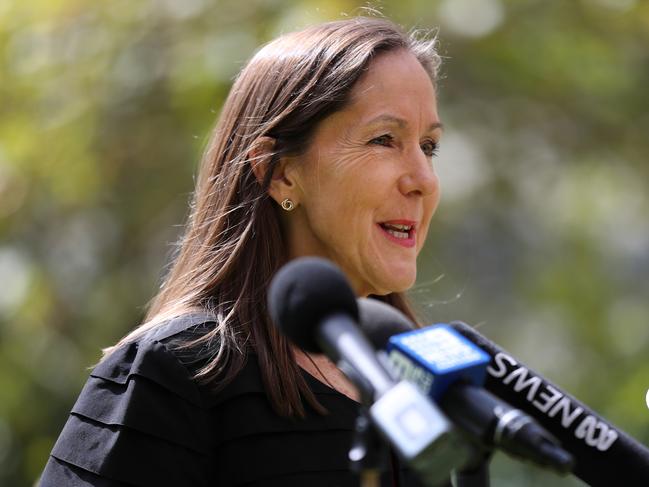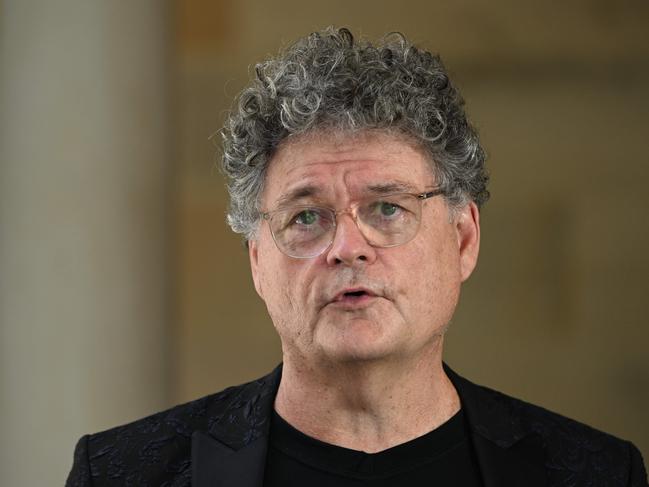Covid Christmas strain: The new Omicron variants that worry experts
Covid poses a new threat to Australia as travellers face increased exposure overseas. Here’s what you need to know.
News
Don't miss out on the headlines from News. Followed categories will be added to My News.
As Australia sees a spike in Covid strains able to evade the immune system, fears are growing that Christmas travel will accelerate the transmission of new variants that have emerged amid a global increase in virus cases.
Covid-19 has been increasing throughout Australia since mid-August, with federal health department data reporting 6550 cases the week ending October 24 – a 23.6 per cent increase on the previous week.
While it was unclear what was driving the surge, it does coincide with the introduction of Omicron mutations arriving in Australia from overseas travellers.
The strain HV. 1 has become the most common in the United States, taking over from the closely related EG.5, nicknamed Eris. The two strains, distinguished by their increased transmissibility and ability to evade antibodies, make up almost about half of all cases in America.
Scientists are also closely monitoring another two variants, JN. 1 and BA. 2.86 – nicknamed “Pirola” and described as potentially the most dangerous since the Omicron mutation.
“Pirola” was first detected entering the United States in August through Washington DC, from Japan, by the Centres for Disease Control and Prevention’s volunteer-based testing program.
With no Covid travel restrictions in the US, UK or Europe, the CDC has been enlisting volunteers at major international airports for a Traveler-based Genomic Surveillance program for the early detection of new variants and to track their transmission during busy holiday travel periods.
Queensland’s Chief Health Officer John Gerrard said the state’s increase of 207 patients hospitalised due to Covid-19 coincided with the arrival of “Pirola”, adding that the wave of new cases seemed to be happening around Australia.
The largest week-on-week increases were seen in Western Australia, up 43.7 per cent and the Northern Territory, up 45.1 per cent, followed by Tasmania with a 28.4 per cent increase and New South Wales up 23.8 per cent.

NSW Health Director of Communicable Diseases Christine Selvey said the stats suggest the latest wave could peak at Christmas for “the third year in a row”.
“We had that first Omicron wave that coincided with Christmas and the New Year when it was really, really hectic and again last year around Christmas time, so certainly it could be — we don’t expect it to peak until some time in December,” Dr Selvey told ABC News.
The Royal Australian College of General Practitioners Vice President Dr Bruce Willett said the increase in Covid-19 cases was “concerning”.
“Unfortunately, the virus has not gone away and we need to do what we can to protect ourselves and the people around us, especially older people and other people with who are at greater risk of death or severe illness from a Covid-19 infection,” Dr Willett said.

“Testing is still important and people who are sick should consider wearing a mask, and vaccination is still our best defence against more dangerous outcomes due to an infection.”
Australian Medical Association professor Steve Robson added that every new wave of Covid-19 is a reminder that people need to get vaccinated.
“Particularly those most vulnerable to getting really sick, like the aged and people whose immune systems are compromised,” he said.
“We need to try and avoid people getting sick enough that they need to go to hospital and put extra pressure on hospitals. The best way to do this is to get your boosters, which reduces the risk of getting Covid and the severity of illness if people do contract it.”
Here’s what you need to know about the new Christmas Covid strains.
EG.5 (“ERIS”) AND HV. 1
The two closely related Omicron sub-variants have been trading places as the most dominant variant worldwide since August, according to the World Health Organisation.
EG.5 has a mutation that helps it evade antibodies the immune system created from either previous infections from earlier Covid strains, or from vaccines.
It was first identified in China in February before it spread to the United States in April.
HV. 1 descended from EG.5, and its rapid rise to dominance as the most common strain indicates the development of a new mutation that either increased its transmissibility or ability to evadev the immune system.
Both are descendants of the XBB variant. Updated Covid vaccines from Pfizer and Moderna target a different XBB descendant, XBB. 1.5.

BA. 2.86 (“PIROLA”) and JN. 1
Strain BA. 2.86, first detected in Denmark on July 25, has been described as the most deadly stain since the Omicron mutation first appeared.
It has been detected in 11 countries including Australia, the UK, the US, South Africa, Thailand, Japan, Switzerland and South Korea.
While there are concerns vaccines are not effective against “Pirola”, the strain has not established dominance over other variants.
JN. 1 descended from BA. 2.86, and it carries a mutation adding even more capabilities to evade the immune system, according to data released on the variant. But that increased ability came at the cost of its ability to bind to human cells, making it less transmissible.
More Coverage
Originally published as Covid Christmas strain: The new Omicron variants that worry experts





